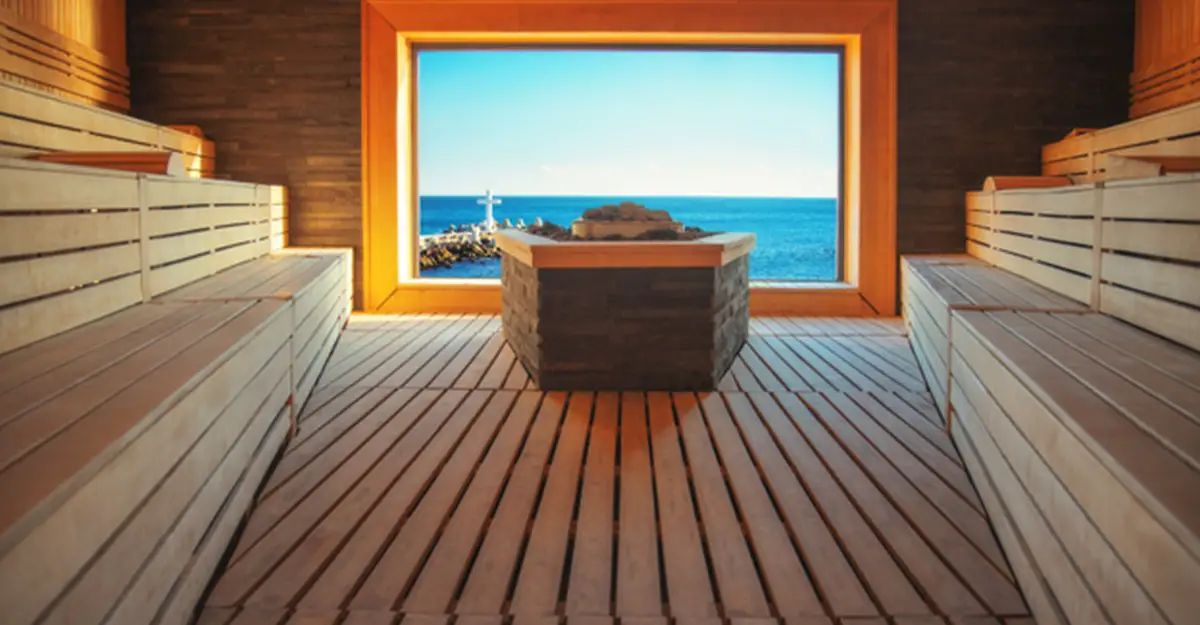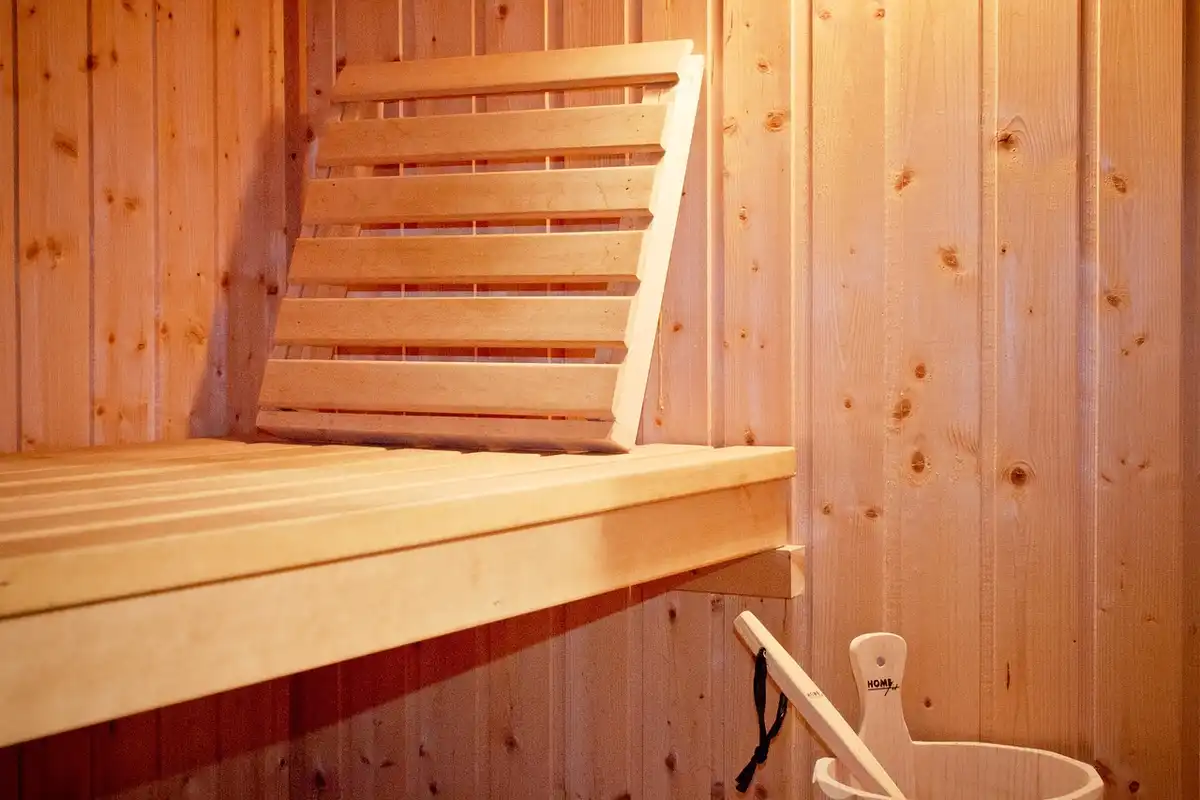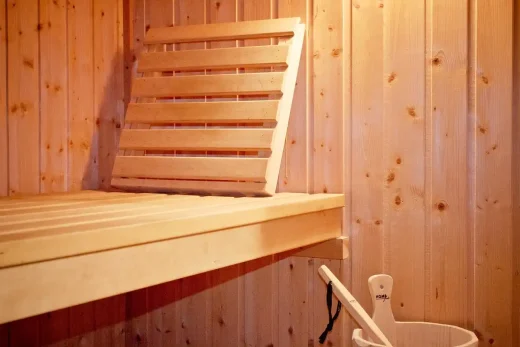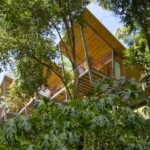Are you looking into installing a sauna in your home, Home relaxation space, Luxury house design
Looking into Installing a Sauna in Your Home? Things to Consider
17 February 2025
With a sauna, you can easily relax, de-stress, and detox.
But installing it in your home is a significant commitment to make. And so, it requires careful thought and planning. Here’s what to consider.
Choosing the Right Sauna Type
You’ll have two main home sauna options: traditional or infrared saunas.
Key Differences
While both sauna types promote sweating and relaxation, the user experience differs significantly:
Traditional Saunas
- Heat the air to 160°F-212°F
- Use steam from water on hot rocks to increase humidity
- Provide an immersive, enveloping heat
- Allow for social experience with others
- Require 20-30 minutes to preheat
Infrared Saunas
- Use infrared light to heat your body directly (not the air)
- Typically max out at 140°F
- Feel more like targeted heat therapy
- Best for 1-2 person use
- Heat up more quickly
The traditional sauna replicates centuries of Finnish sauna culture. The steam, scents from wood, and intense heat create a special social experience. Infrared saunas provide more direct body warming that feels therapeutic.
Indoor vs Outdoor Sauna Placement
Based on climate, space and aesthetics, you can decide on where to install them.
Indoor Sauna Benefits
- More private
- Usable year-round
- Close access from home
- Less planning is needed per use
Outdoor Sauna Benefits
- Creates special escape and journey
- Immersive nature experience
- Can be used for star gazing at night
- The sauna session feels more intentional
If choosing an outdoor sauna, weather protection and excellent insulation become critical. The sauna must withstand all weather while maintaining safe function.
Custom-Built vs Prefabricated Saunas
You can buy a premade sauna kit or hire contractors to custom-build your sauna.
Prefab Sauna Considerations
- Lower cost
- Easy to install
- Limited in layouts and materials
Custom-Built Sauna Considerations
- Design it just for you
- Choose layout, materials, features
- Higher cost to build
- Permits often required
Prefabricated saunas provide the most cost-effective and convenient option. But custom-built saunas allow you to personalize the details to suit your space and preferences.
Choosing the Right Sauna Location
The sauna location impacts convenience, privacy, and the user experience.
Key Indoor Sauna Placement Considerations
- Ventilation:Excellent ventilation is mandatory for safety and comfort. Systems should exchange indoor and outdoor air without drafts.
- Moisture Control:Proper humidity levels must be maintained inside and outside the sauna to prevent mold and moisture damage.
- Electrical:Locate near an existing high-capacity circuit to avoid expensive new wiring.
- Journey:Place in a sequence that provides an intentional transition into relaxation.
- Convenience:Ensure household members can access the sauna easily when desired.
Key Outdoor Sauna Placement Considerations
- Weather Protection:Overhangs, durability and insulation allow it to withstand the weather.
- Accessibility:Near home for convenience but private. Clear walking paths prevent injury.
- Scenery:Consider views from within the sauna and star gazing capability.
- Privacy:Design a peaceful escape that feels secluded from neighbors.
- Security:Ensure the sauna is protected when not occupied.
Take time to think about your lifestyle goals for the sauna. Then determine placement based on who will use it and when, your climate, changing seasons and more.
Electrical Requirements and Safety
Saunas require proper electrical setup for power, safety, and efficiency.
Infrared Sauna Electrical Considerations
While infrared saunas use less power, they rely on clean stable power to work correctly. Install a dedicated outlet meeting the manufacturer’s specifications.
Traditional Sauna Electrical Considerations
Traditional saunas require specialized 220-240 volt wiring with grounding. A licensed electrician must install the dedicated high-capacity circuits to meet building codes.
Essential Electrical Safety Precautions
Electrical safety is critical given heat, steam and risk of electric shock. Consider:
- Waterproof interior outlets
- Outdoor outlets with GFCI capability
- Moisture sensors to disable power if needed
- Light switches located outside the sauna
- Signage indicating safety protocols
Consult an electrician experienced in sauna installation to ensure a safe system.
Sauna Building Materials and Construction
The materials impact the safety, comfort, longevity and overall sauna experience.
Sauna Wood Types
Traditional saunas use wood benches, wall paneling and ceiling finishes. Common wood options include:
Cedar Wood
- Exceptional durability
- Aromatic scent
- Naturally resists mold and insects
- Handles temperature fluctuations
Hemlock Wood
- Very durable
- Light color
- Costs less than cedar
Spruce Wood
- Light color
- Fresh, appealing scent
- Requires sealants for protection
Always use wood types approved for sauna use at hot temperatures. Ensure any sealants meet safety standards when heated.
Insulation and Vapor Barriers
Saunas require special insulation designed for extreme temperature differences, humidity and steam. Recommended insulation options include:
- Mineral wool
- Ceramic fiber
- Perlite board
- Foil-faced fiberglass specifically rated for saunas
Vapor barriers are also essential to prevent moisture from damaging walls, ceilings or framing. Consult local building codes to ensure compliant vapor barrier installations.
Heating System Options
The heating system impacts cost, maintenance, environmental impact, convenience and the overall experience.
Types of Sauna Heaters
Electric Heaters
- Convenient and adjustable
- Rely on home electric system
- Higher operating costs
Wood Stoves
- Burning wood releases moisture and aroma
- Lower costs with accessible wood
- Higher maintenance
Gas Heaters
- Heat up quickly
- Lower operating costs
- Must have ventilation to avoid carbon monoxide poisoning
Hybrid Heaters
- Use electric and wood heat
- Lower costs than electric alone
Also consider heat-up times, maximum temperatures and safety features like timers or overload protection. Choose the heating system aligned with your lifestyle, preferences and budget.
Ventilation and Airflow System
Every sauna absolutely requires proper ventilation for safety, cleanliness and comfort.
Why Ventilation Matters
Good ventilation:
- Removes moisture to prevent mold
- Provides fresh air circulation
- Distributes heat evenly
- Controls humidity for comfort
- Refreshes stale air
Without it, safety and hygiene issues will result quickly.
Installing Intake and Exhaust Vents
Work with HVAC experts to install vents properly based on the sauna layout.
- Intake ventsbring in fresh air. Place them lower on the wall to maintain cooler air entering.
- Exhaust ventsshould be higher up to remove hot air and steam.
The positioning allows continuous airflow without letting in cold drafts or losing heat energy.
Health, Hygiene, and Safety Considerations
It’s crucial to prioritize health and safety when planning your home sauna.
Temperature, Humidity and Time Limits
The combination of heat and humidity impacts how safe and enjoyable the sauna will be:
- 160°F to 185°F is comfortable for most healthy adults
- 10-20 minute sessions prevent overheating or dehydration
- Limit humidity to 10-15% inside the sauna
- Provide hygrometers and thermometers to monitor
Fire Hazards and Precautions
Saunas demand strict precautions given heating elements and steam.
- Only use certified heaters made specifically for saunas
- Install timers to prevent accidental overheating
- Place wood-burning stoves away from benches and walls
- Ensure functioning smoke and carbon monoxide detectors
- Store all flammables away from the sauna
- Provide a fire extinguisher and emergency first aid kit
Prioritizing health is also key. Consult your doctor about safe sauna use if pregnant, elderly, having medical conditions or on medications.
Accessories and Upgrades
The right accessories transform a basic sauna into a customized wellness retreat. Fun additions could include:
Interior Decor Upgrades
- Chromotherapy lighting (colored LED lights to set the mood)
- Heated flooring for feet
- Towel warmers
- Speakers for music
- Essential oil diffuser
- Magazines or sauna buckets and ladle
Comfort and Convenience Accessories
- Luxury towels
- Headrest pillows
- Ergonomic floor mats
- Hygrometer / thermometer
- Sand timer
- Waterproof clock
- Beverage cooler
When equipping your sauna, look for accessories specially rated for sauna use at hot temperatures. This helps avoid damage or safety hazards.
Sauna Maintenance
Performing regular sauna maintenance prevents problems and keeps it operating safely.
Cleaning and Disinfecting
- Wash benches, flooring, and walls with disinfectants regularly
- Use mildew removers if mold spotted
- Provide floor drain to remove water
- Replace bamboo mats annually
Heater Inspections
- Hire technicians to inspect heaters annually
- Ensure heating elements fully dry before use
- Make repairs immediately if issues arise
Review your sauna manual for the suggested cleaning schedule and heater precautions.
Cost to Build and Operate
Understand the upfront and ongoing costs when budgeting for your home sauna.
Upfront Sauna Costs
According to the National Kitchen and Bath Association, you can expect to invest:
- $5,000 to $7,000 installedfor basic portable infrared saunas
- $7,000 to $15,000 installedfor precut kit saunas
- $15,000 to $50,000+for high-end custom build saunas
This covers materials, construction, electrical, ventilation and all labor costs. Unique structural changes, extensive site prep or custom designs raise costs.
Ongoing Sauna Operating Costs
The sauna’s heating system determines electrical and maintenance costs. For example:
- Electric infrared saunascost $30 to $150 annually, depending on use
- Electric traditional saunasaverage $200 to $800 annually
- Wood-burning saunasaverage $400 annually for wood
Cleaning supplies, repairs and wood storage costs add up annually too.
Ideally, build your dream sauna within a reasonable budget aligned with how often you will relax and enjoy it.
Looking into installing a sauna in your home Conclusion
Adding a sauna provides daily opportunities for self-care and family bonding. And your sauna choices define safety, cost, convenience and how you will ultimately enjoy the experience for years.
Use this comprehensive guide – covering layout, construction, materials, electrical safety, heating, ventilation and more – to make informed decisions. Think through your lifestyle goals, wellness priorities and budget, and use that to guide your investment.
The planning you put in now will allow you to relax, de-stress and enjoy a custom home sauna tailored perfectly for you. Just be sure to gather input from everyone who will use it too!
Comments on this guide to Are You Looking into Installing a Sauna in Your Home? Things to Consider article are welcome.
Home Saunas and Hot Tubs
Home Saunas
Reimagining relaxation in home saunas

Barrel Saunas in Contemporary Garden Architecture
How long should you stay in sauna guide
How custom sauna design adds luxury elegance to home
5 outdoor upgrades to increase home value
Hot Tubs
Inflatable hot tubs ultimate backyard oasis
Cutting costs of hot tub and swimming pool installation
+++
Property
Contemporary Property Articles – architectural selection below:
Comments / photos for the Are You Looking into Installing a Sauna in Your Home? Things to Consider page welcome.






